
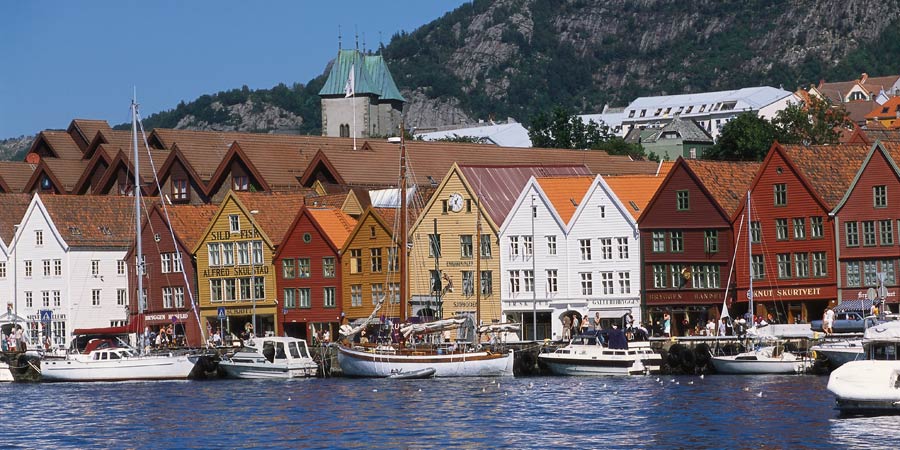
Bergen
The city of Bergen is surrounded by seven mountains and is based around its harbour. In the Bergenhus district there are well-preserved medieval buildings. On the other side of the harbour is the Klosteret area, which has beautiful 18th century wooden houses and charming alleys, where you can take a stroll out to the Nordnes peninsula. The city centre extends from the main square (Torget) to the Nygård area, where most of the shops and restaurants can be found. In the Middle Ages, Bergen was the largest city in Scandinavia and it wasn't until the 1830s that it was overtaken by Oslo.
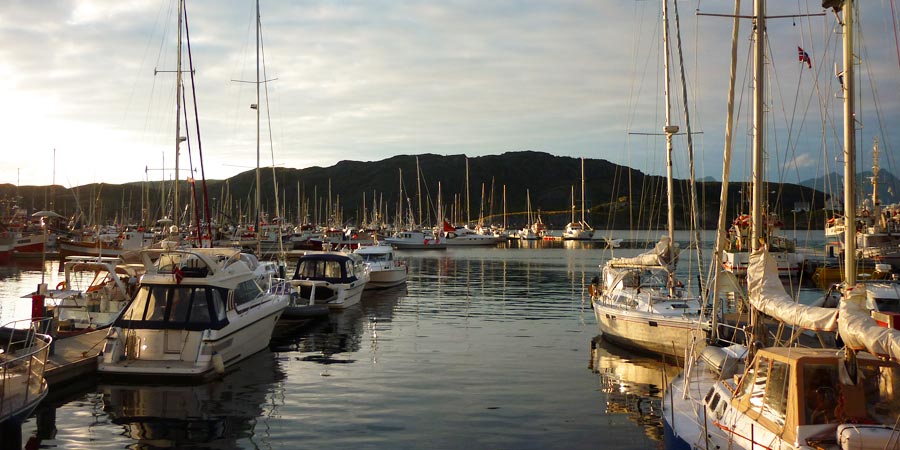
Bodo
Despite its location just within the Arctic Circle, the meandering and pretty coastal city of Bodo in Norway's stunningly scenic Nordland region rarely experiences temperatures more than few degrees below zero even in the depths of winter. A relatively young destination, Bodo gained town status in 1816 as a fish trading and export centre intended to reduce northern Norway's reliance upon supplies from Bergen, some fifteen-hundred kilometres further south.
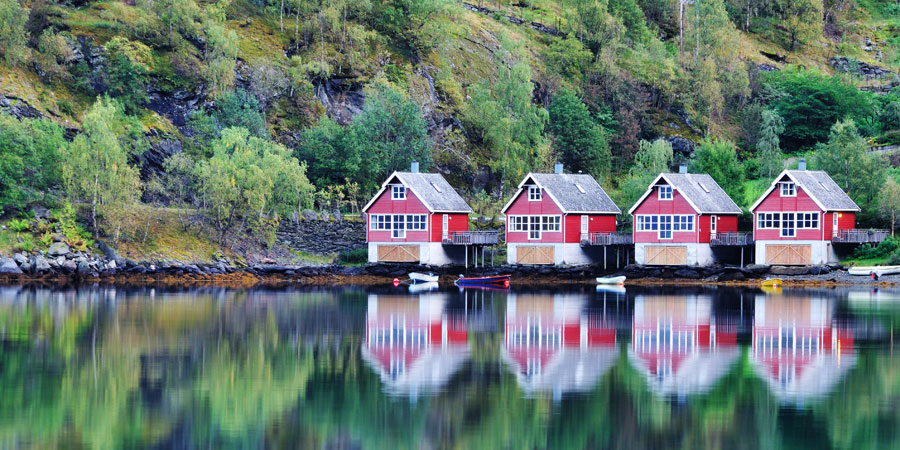
Flåm
The beautiful small town of Flåm is nestled deep in a tributary of the world's longest and deepest fjord, the 204-kilometre-long and 1308-metre-deep Sognefjord. Surrounded by steep mountainsides, roaring waterfalls and deep valleys, this area is a truly spectacular natural wonder, whether the sun is shining or rain is pouring from the sky.
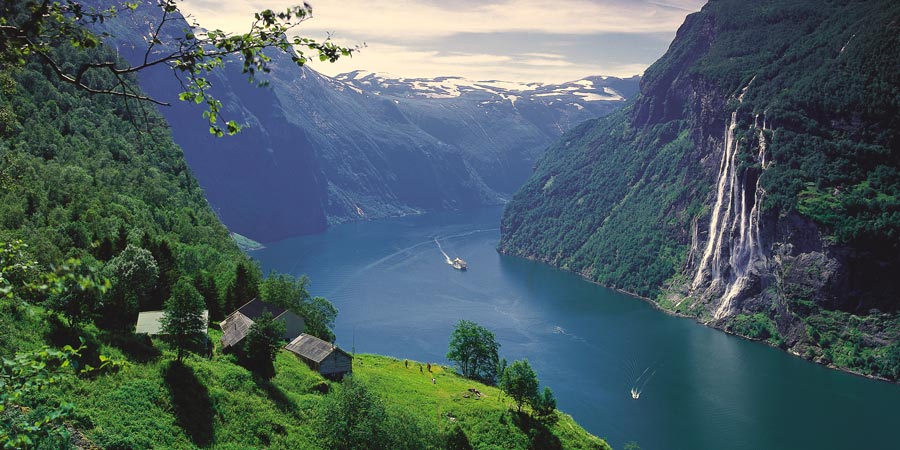
Geirangerfjord
A nine-mile-long branch of the Storfjord (meaning 'Great Fjord'), the magnificent Geirangerfjord boasts towering walls that overlook some of Europe's finest scenery. Along Geirangerfjord's shores, a number of high waterfalls - including the Seven Sisters and the Suitor - plunge straight from the lofty forests to the smooth waters below. There are also a scattering of abandoned farm buildings dotted along the steep shores. Acclaimed for its stunning, unique landscape, the Geirangerfjord was added to the list of UNESCO World Heritage sites in 2005.
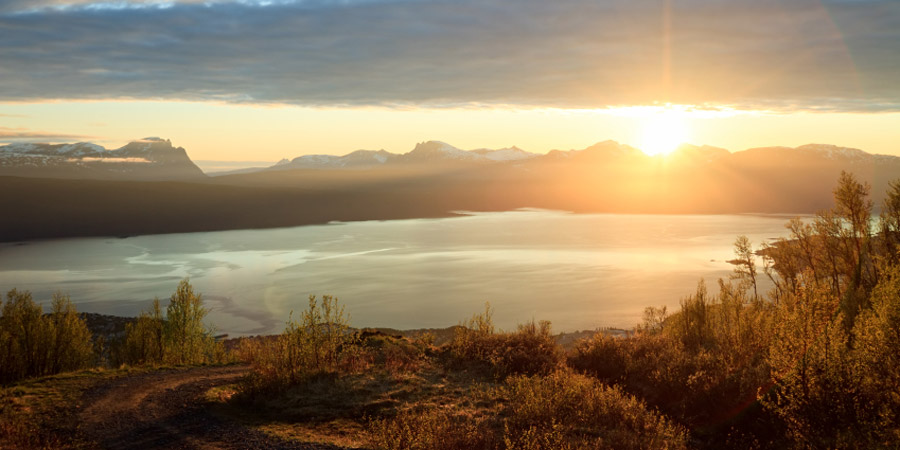
Narvik
Perched on the shore of the Narvik Fjord, Narvik is one of northern Norway's largest cities. Much of this industrial city's growth came with the arrival of the Ofoten Railway in the late 19th century. This line carried (and continues to carry) iron ore from the Kiruna mines just over the Swedish border, and in Narvik the iron ore is loaded onto ships bound for distant smelters. Its role as an important trading port marked Narvik out as a prime target for German forces during the Second World War.
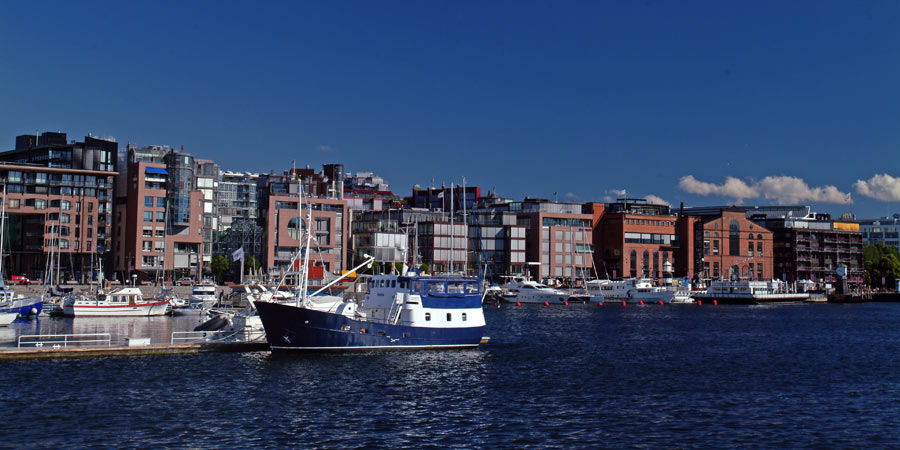
Oslo
The capital of Norway is called "The Green Capital" because of all the beautiful parks. Oslo is situated beside a fjord and surrounded by forest-covered mountains. Around the 14th century it had a population of 3,000 and was the home of King Håkon V - famous for his Akershus Castle and Fortress. In 1624, Oslo was destroyed in a large fire. Denmark's King Christian IV rebuilt it, but renamed the city Christiania.
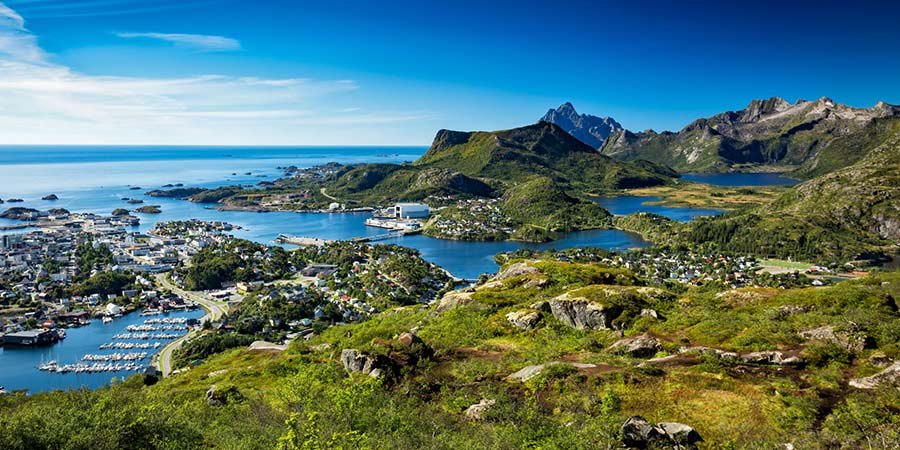
Svolvaer
Svolvaer, a modern town that has grown from an ancient fishing village, is situated on the east coast of the island of Austvågøy, one of the larger islands of Norway's Lofoten archipelago. Lofoten's location in the beautiful Nordland region ensures that Svolvaer enjoys superb views of the archipelago's snow-capped peaks and shimmering blue fjords.
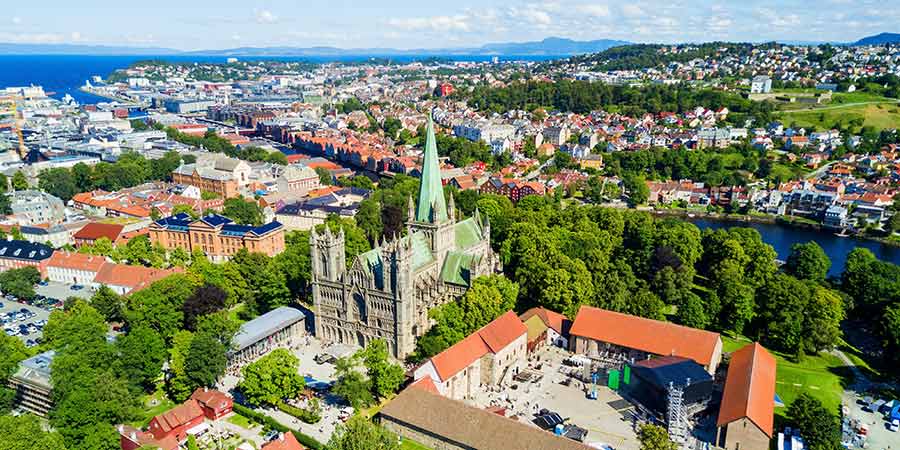
Trondheim
Founded in the 10th century, Trondheim is one of the oldest cities in Norway - as well as one of its largest - and is brimming with history. Having been the former seat of the Norwegian kings, the wealthy city of Trondheim was also a Scandinavian spiritual centre throughout the Middle Ages. In 1681 a huge fire damaged much of the city, though this was swiftly rebuilt in a grand style, much of which survives today.